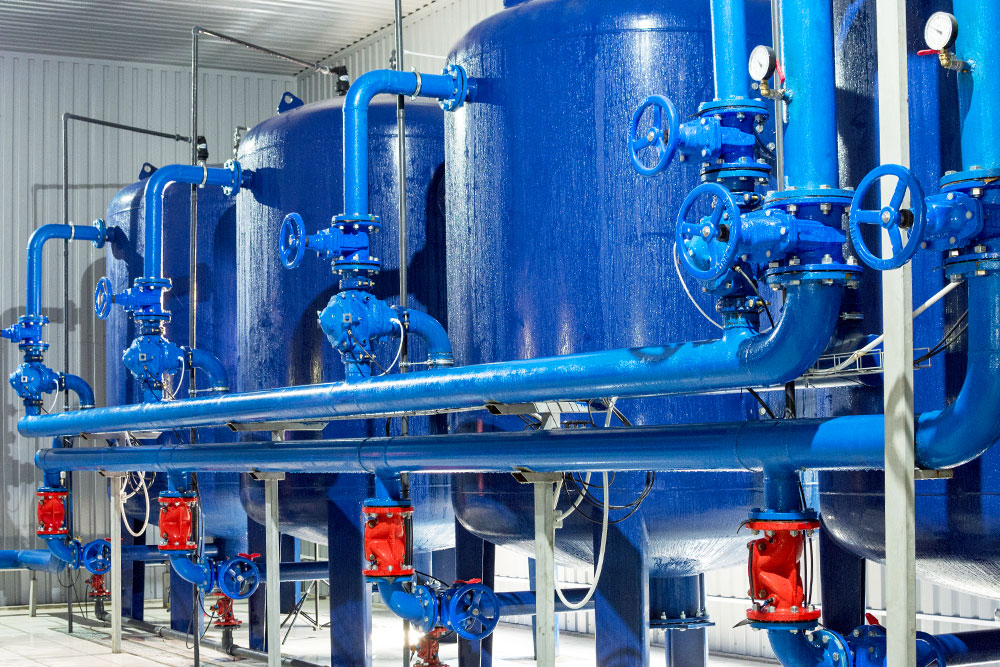Water supplies meeting treatment requirements
Water Treatment & Disinfection Byproducts (DBPs)
Back to Compare
Disinfection Byproducts (DBPs)

Summary
- Disinfection byproducts are a group of chemicals formed in low levels when disinfectants like chlorine interact with organic compounds naturally found in drinking water and have been linked to cancer in humans
- DBPs have different maximum contaminant levels ranging between 0.01-1 ppm depending on jurisdiction and type
- Water treatment managers may reduce the levels of DBPs in treated water by replacing chlorine as a disinfectant or performing total organic carbon removal through enhanced coagulation, enhanced softening, and activated carbon adsorption
What are disinfection byproducts (DBP)?
Disinfection byproducts (DBP) are a group of chemicals formed in low levels when disinfectants like chlorine interact with organic compounds naturally found in drinking water.
Where does it come from?
Disinfection, done through processes such as chlorination, is an important step in water treatment to reduce waterborne illnesses from viruses and bacteria and is required by the U.S. EPA and Health Canada. The more total organic carbon (TOC) present in the water source, the higher chance of DBP formation. The design and operation of the water systems (e.g., time between treatment and consumption) can also influence DBP formation. Studies have demonstrated evidence for DBPs’ carcinogenicity in humans.
What are the contamination standards?
Table 1: Maximum Contaminant Level (MCL) for several types of DBP within the United States and Canada
| Type of DBP | United States EPA | Health Canada |
|---|---|---|
| Haloacetic acids (HAAs) | 0.06 ppm | 0.08 ppm |
| Total Trihalomethanes (TTHMs) | 0.08 ppm | 0.10 ppm |
| Chlorite | 1 ppm | 1 ppm |
| Bromate | 0.01 ppm | 0.01 ppm |
How is drinking water treated to meet applicable standards?
Water managers meet the above standards through TOC removal and the choice of primary disinfectant. Water treatment managers may reduce the levels of DBPs by selecting disinfectants other than chlorine. Alternative disinfectants include UV, chlorine dioxide, and chloramine. UV lights are an expensive yet efficient disinfectant, though they require the use of a secondary disinfection system. Chlorine dioxide is also an effective disinfectant and oxidant, however its extensive equipment makes it a more expensive option. Utilizing chloramine as a secondary disinfectant will reduce the production of DBPs more inexpensively but may produce other toxins/disinfection by-products or extract lead from lead lines depending on the circumstances.
TOC removal can be achieved through enhanced coagulation, enhanced softening, and activated carbon adsorption. A combination of powdered activated carbon and enhanced coagulation has high removal efficiency of around 75%. Water supplies with high organic load may utilize granular activated carbon to effectively remove organics to reduce DBPs, but this method also requires high installation, operation, and maintenance costs.
The process of drinking water treatment should be optimized from a system level to analyze the best method for DBP reduction based on source water chemistry, other treatment priorities, cost, and existing treatment infrastructure.
References
- Water Quality & Health Council, In the Balance: Drinking Water Chlorination and Disinfection Byproducts (2020). Accessible online: https://waterandhealth.org/safe-drinking-water/treatment/in-the-balance-drinking-water-chlorination-and-disinfection-byproducts/
- Government of Canada, Drinking Water Chlorination (2006). Accessible online: https://www.canada.ca/en/health-canada/services/healthy-living/your-health/environment/drinking-water-chlorination.html
- Washington State Department of Health, Disinfection Byproducts—Chlorination of Drinking Water. Accessible online: https://doh.wa.gov/community-and-environment/drinking-water/disinfection/disinfection-byproducts
- CDC, Disinfection By-Products (2022). Accessible online: https://www.cdc.gov/healthywater/global/household-water-treatment/chlorination-byproducts.html
- EPA, National Primary Drinking Water Regulations. Accessible online: https://www.epa.gov/ground-water-and-drinking-water/national-primary-drinking-water-regulations#one
- Government of Canada, Guidelines for Canadian Drinking Water Quality – Summary Table (2020). Accessible online: https://www.canada.ca/en/health-canada/services/environmental-workplace-health/reports-publications/water-quality/guidelines-canadian-drinking-water-quality-summary-table.html
- WesTech Engineering, Strategies for Reducing Disinfection Byproducts. (2020). Accessible online: https://www.westech-inc.com/blog/strategies-for-reducing-disinfection-byproducts
- Parvez, S., Disinfection Byproducts: Treatment Options And Challenges For Public Water Suppliers. Water Online (2014). Available online: https://www.wateronline.com/doc/disinfection-byproducts-treatment-options-and-challenges-for-public-water-suppliers-0001#:~:text=The%20removal%20of%20precursor%20organics%20before%20disinfection%20prevents,quite%20affordable%20and%20commonly%20used%20by%20water%20suppliers.
- EPA, Comprehensive Disinfectants and Disinfection Byproducts Rules (Stage 1 and Stage 2): Quick Reference Guide. Accessible online: https://nepis.epa.gov/Exe/ZyPDF.cgi?Dockey=P100C8XW.txt
- EPA, Optimization to Reduce Disinfection Byproducts (DBPs). Accessible online: https://www.epa.gov/sdwa/optimization-reduce-disinfection-byproducts-dbps
